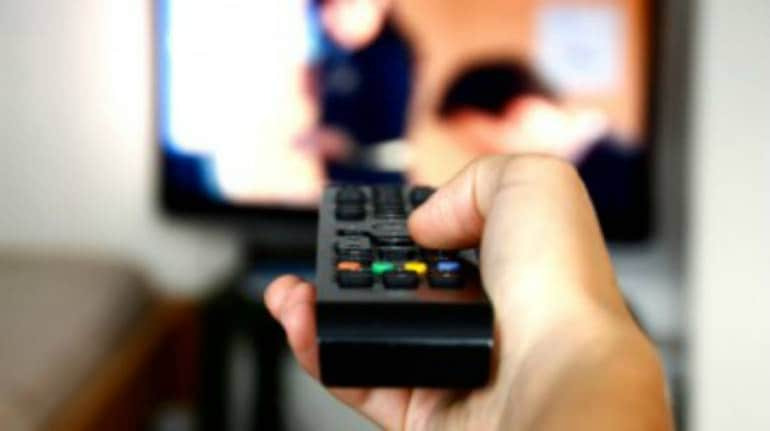Implementation of new order will bring down per-channel price to Rs 12 from Rs 19, and double the number of channels available for viewers. TRAI wants broadcasters to publish pricing and bouquet details by Aug 10. Fearing further erosion in ad and subscription base, broadcasters are not in a mood to do so.
If the going wasn’t tough enough for the TV industry, it may have just got tougher.
The industry is already reeling under low advertising revenue, what with few companies launching products, most slashing marketing budgets, and advertisers either not advertising at all, or doing so at discounted rates.
Now there is another challenge: New Tariff Order 2.0. On July 24, the Telecom Regulatory Authority of India (TRAI) directed broadcasters to implement it by August 10.
What is NTO 2.0?
It bodes well for customers – and ill for broadcasters. To begin with, it seeks to cut the maximum ceiling on a TV channel pricing from Rs 19 to Rs 12. The new order offers customers double the channels or as many as 200 channels under the base Network Capacity Fee (NCF) slab, which is Rs 130. It is 100 channels now.
Since the implementation of NTO 1.0 in February 2019, TV viewers have been able to see the price of every channel they watch on their screens. Plus, customers have the choice to choose -- and pay only those channels that want to watch.
How NTO 2.0 will hit broadcasters?
Karan Taurani, Vice President, Elara Capital, who closely tracks media and entertainment space, is right on the mark.
“This move will have a negative impact on broadcasters’ subscription revenue, which has grown from almost 30 percent to 40 percent year-on-year due to higher share and increased average revenue per user (ARPU),” he said.
The new order will negatively hit ARPUs and lower ARPUs mean lower share of revenue. Ad spends during the transition phase is another itch. During the implementation of NTO 1.0, advertisers had stayed away from TV. It’s not expected to be any different under NTO 2.0.
For NTO 1.0, broadcasters had collectively spent over Rs 1,000 crore on creating awareness about the changes. They also lost as many as 12-15 million subscribers.
The new order has certain other conditions that will further hurt broadcasters.
For example, when the pricing comes down from Rs 19 to Rs 12, a lot of channels may not be part of a bouquet. This will see some bouquets falling off the customers’ wish list.
Broadcasters get 93 percent revenues from bouquet channels and only seven percent from ala carte channels.
With the size of the bouquet coming down from 8-10 channels to 3-4, there will be more fragmentation within the industry. This, in turn, will reduce viewership and narrow subscription revenue.
With NTO 2.0 coming into force, what all broadcasters have to do?
According to TRAI’s directive, by August 10, broadcasters will have to publish the maximum retail price per month per channel, the per-month bouquet-channel pricing, and the composition of bouquets, among others, on their websites.
Why is TRAI implementing NTO 2.0 now?
The TRAI argument is that any delay in implementation will bring back non-transparency and discriminatory practices. As an example, it cited the case of a major broadcaster discontinuing low-priced bouquets and forcing consumers to choose higher priced options.
Another reason is the non-willingness of many broadcasters to sign the agreement.
Are broadcasters right in questioning the timing of NTO 2.0?
TV industry experts say COVID times are not the right time. In fact, after months of old content, broadcasters are now offering new episodes as shooting has resumed. Thanks to the new content, even advertisers are coming back.
There is a ray of hope for broadcasters, though. Information and Broadcasting Minister Prakash Javadekar had assured them that NTO 2.0 will not be implemented anytime soon as the TV industry is already reeling under COVID-19 stress.
What is more interesting is that earlier this year when the Indian Broadcasting Foundation (IBF) and nine other petitioners challenged the amendments to NTO 2.0, which was notified on January 1, the Bombay High Court had asked TRAI and the petitioners to not go ahead with the implementation.
What broadcasters have been saying about NTO 2.0?
Uday Shankar, The Walt Disney Company, APAC and Chairman, Star & Disney India, in an earlier statement, had said that while TRAI aims to bring prices down for consumers on the one hand, it seeks to cap discounts on the other hand.
Viacom18's Sudhanshu Vats had also questioned the need for another order when NTO 1.0 is already being followed.
He said that 70 percent customers bought a bouquet from distribution platform operators (DPOs). A crore and a half of the audience opted for NTO 1.0. Plus, 94 percent audience was aware about the shift. So, what’s the need for another NTO, he asks.
Will NTO 2.0 see the light of day?
While the TV industry is puzzled with the new directive, there is a high probability that the order will be further challenged by the broadcasters. Hence, uncertainty remains over its implementation.








